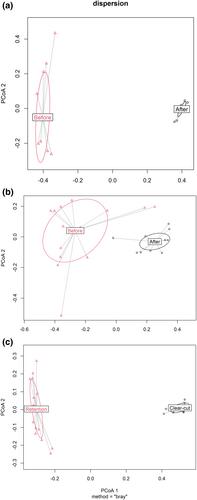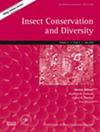Ecologically sustainable retention forestry supports spider biodiversity in the Lower Morava UNESCO Biosphere Reserve
IF 3.2
2区 农林科学
Q1 ENTOMOLOGY
引用次数: 0
Abstract


生态上可持续的保留林支持下摩拉瓦联合国教科文组织生物圈保护区的蜘蛛生物多样性
洪泛平原森林是全球最濒危的生态系统之一,尽管它们是众多生物分类群的热点。放弃传统管理和大规模木材采伐(如砍伐)导致洪泛平原森林生物多样性减少。保留林有可能促进生态可持续森林管理方法的实施。尽管这种方法越来越受欢迎,但其在保护蜘蛛多样性方面的潜力,尤其是与普遍采用的皆伐做法的比较,仍然鲜有研究。我们研究了林业处理方法(保留 60% 树木的分散保留法和砍伐法)对捷克共和国莫拉瓦河下游(马奇河)和迪耶河下游(塔亚河)洪泛平原森林中地栖蜘蛛多样性的短期影响。在 2021 年(采伐前)和 2022 年(采伐后)期间,使用坑式陷阱对蜘蛛进行了采样。共记录了 167 个物种的 10 005 个标本。与采伐前相比,两种林业处理方法都简化了栖息地结构,导致地点内的β多样性降低。不过,分散保留地的阿尔法和贝塔多样性均高于砍伐地,这表明保留地提供了结构更复杂的生境。分散保留地和开阔地拥有不同的蜘蛛群落和特征指示物种。典型的开阔和受严重干扰的栖息地物种更喜欢开阔地,而典型的森林和(半)开阔栖息地物种(包括受威胁物种)则更喜欢分散保留地。我们的研究结果首次证明,分散保留林可以作为一种有效的管理工具,保护洪泛平原森林中的地栖蜘蛛群。
本文章由计算机程序翻译,如有差异,请以英文原文为准。
求助全文
约1分钟内获得全文
求助全文
来源期刊
CiteScore
7.70
自引率
8.60%
发文量
58
审稿时长
>12 weeks
期刊介绍:
To publish papers of the highest scientific quality within the general area of insect (and other arthropods) conservation and diversity covering topics ranging from ecological theory to practical management.
Papers are invited on the following topics: Conservation genetics; Extinction debt; Long-term conservation planning and implementation; Global implications of local or national conservation actions; Management responses of species and communities; Captive breeding programs; Comparisons of restored and natural habitats; Biogeography; Global biodiversity; Metapopulation dynamics; Climate change: impacts on distributions and range; Invasive species: impacts and control; Effects of pollution; Genetic threats to diversity by introgression; Effects of fragmentation on diversity and distribution; Impact of agricultural and forestry practices on biodiversity; Enhancing urban environments for diversity and protection; Biodiversity action plans: can we scale up from insects?; Effectiveness and choice of indicator species; Soil biodiversity and interactions with above-ground biodiversity; Ecological interactions at local levels; Ecological and evolutionary factors influencing diversity and local, regional and global scales; Sustainable livelihoods and training on the ground; Integrating science and policy.

 求助内容:
求助内容: 应助结果提醒方式:
应助结果提醒方式:


